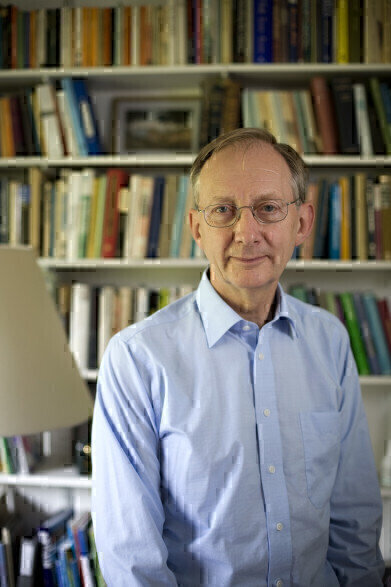-
 Sir John Pendry
Sir John Pendry
News & Views
ICL Physicist Professor Sir John Pendry Shares Kavli Prize
Jun 27 2014
Imperial College London’s Professor Sir John Pendry – known for his work on the ‘invisibility cloak’ and the perfect lens - has been awarded the 2014 Kavli Prize in Nanoscience. The Kavli Prize also honours scientists for outstanding research in the fields of Astrophysics and Neuroscience.
An eminent theoretical physicist, Professor Pendry receives the prize in honour of his contributions to nano-optics, which explores how light behaves on a scale of one billionth of a metre, and to the field of metamaterials - manmade materials with unusual properties that can be manipulated and used for potentially transformative impacts.
Sir John shares the one million dollar Nanoscience Prize with Thomas Ebbesen from the University of Strasbourg and Professor Stefan Hell from the Max Planck Institute for Biophysical Chemistry. The winners will receive their awards from the King of Norway at an award ceremony in Oslo this September.
Professor Sir John Pendry FRS said: "I am delighted and greatly honoured to receive the Kavli Prize. I’m also delighted for my joint award winners, Thomas Ebbesen and Stefan Hell who are also friends of mine. It is just wonderful that this Prize is rewarding optics research on the150th anniversary of Maxwell¹s equations when the great Scottish physicist James Clerk Maxwell first set out his equations governing how light moves.”
Professor Pendry has been carrying out research at Imperial’s Physics Blackett Laboratory for over 30 years, having started as Professor of Theoretical Solid State Physics in 1981.
He shares this year’s Prize for his pioneering research that generated the revolutionary theory of the perfect lens. By bending light in dramatically different ways, this research challenged the conventional laws of physics to generate better resolutions than conventional optic lenses. The theory may help image objects smaller than a wavelength of light for the first time.
His theoretical work has also contributed to the first working prototype of a cloaking device that makes an object invisible to radar waves. The device makes radar waves flow smoothly around an object instead of striking and reflecting off of it giving the illusion of transparency.
Digital Edition
Lab Asia 31.2 April 2024
April 2024
In This Edition Chromatography Articles - Approaches to troubleshooting an SPE method for the analysis of oligonucleotides (pt i) - High-precision liquid flow processes demand full fluidic c...
View all digital editions
Events
May 05 2024 Seville, Spain
InformEx Zone at CPhl North America
May 07 2024 Pennsylvania, PA, USA
May 14 2024 Oklahoma City, OK, USA
May 15 2024 Birmingham, UK
May 21 2024 Lagos, Nigeria












.jpg)




